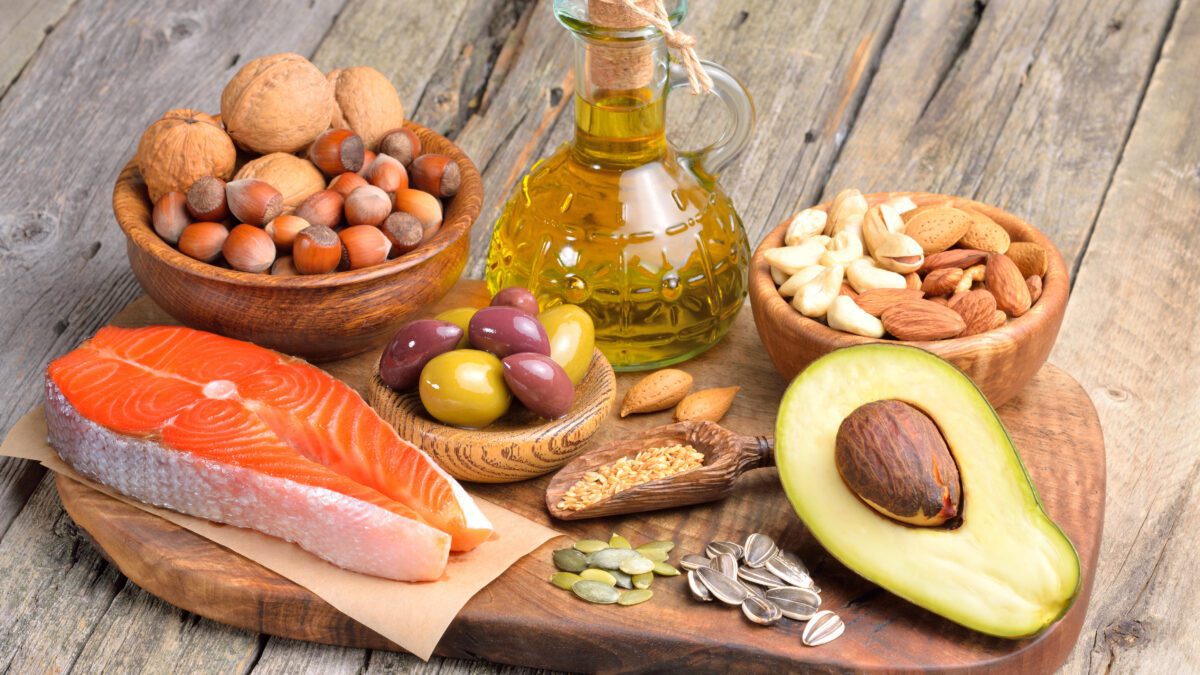For decades, dietary fat was vilified as the primary culprit behind weight gain and heart disease. The low-fat diet trend swept the nation, leading to a proliferation of processed, fat-free foods that were often packed with sugar and refined carbohydrates to compensate for the lack of flavor. This narrative, however, was a dangerous oversimplification. Modern science has unequivocally proven that not all fats create equal. In fact, a diet rich in healthy fats is essential for a wide range of bodily functions, from fueling your brain to absorbing vital vitamins. It’s time to move past the fear of fat and embrace it as a cornerstone of a healthy lifestyle.

This article will serve as your comprehensive guide to understanding healthy fats. We’ll demystify the different types of fat, explore the incredible benefits they provide for your body and brain, and offer actionable tips on how to incorporate them into your daily diet. The goal is to show that a healthy diet isn’t about cutting out fat; it’s about making smart, informed choices that nourish your body.
The Good, the Bad, and the Ugly: Understanding the Types of Fat
The first step to embracing healthy fats is understanding the difference between the good ones and the bad ones.
The Good: Monounsaturated and Polyunsaturated Fats
These are the “healthy fats” you want to include in your diet. They are typically liquid at room temperature and have a host of benefits.
- Monounsaturated Fats: Found in foods like avocados, olive oil, and nuts. They know for their ability to lower LDL (“bad”) cholesterol and raise HDL (“good”) cholesterol, which is a powerful way to reduce the risk of heart disease.
- Polyunsaturated Fats: Found in fatty fish, walnuts, and flaxseeds. This category includes Omega-3 and Omega-6 fatty acids, which are essential for brain function and cell growth. The body cannot produce these on its own, so they must be obtained through your diet. A diet rich in Omega-3s, in particular, has been linked to a reduced risk of inflammation and improved cognitive function.
The Bad: Saturated Fats
These fats are solid at room temperature and are found in foods like red meat, butter, and cheese. While they aren’t as harmful as once thought, it’s best to consume them in moderation. High intake of saturate fat link to an increase in LDL cholesterol and a higher risk of heart disease.
The Ugly: Trans Fats
These are the fats you should avoid at all costs. They are created through an industrial process called hydrogenation that adds hydrogen to liquid vegetable oils to make them more solid. They are found in many processed foods like fried fast food, baked goods, and some margarines. Trans fats no know health benefits and are directly link to an increased risk of heart disease, stroke, and diabetes. The FDA has taken steps to ban trans fats from many processed foods in the United States.
The Benefits of Healthy Fats: Fuel for Your Body and Brain
A diet with an adequate amount of healthy fats can have a profound impact on your overall well-being.
1. Brain Power and Cognitive Function
Your brain is nearly 60% fat, and it needs a steady supply of healthy fats to function optimally. Omega-3 fatty acids, particularly DHA, are a major structural component of the brain and are essential for memory, learning, and overall cognitive function. A study published in the journal Neurology found that older adults with higher levels of Omega-3 fatty acids had better cognitive function and a lower risk of dementia.
2. Cardiovascular Health
A diet rich in monounsaturated and polyunsaturated fats can be a powerful tool for protecting your heart. By lowering bad cholesterol and raising good cholesterol, these fats can reduce plaque buildup in your arteries and lower your risk of heart attack and stroke. A large study from Harvard’s School of Public Health found that replacing saturate and trans fats with healthy fats associate with a lower risk of heart disease.
3. Vitamin Absorption and Satiety
Many essential vitamins, including Vitamins A, D, E, and K, are fat-soluble. This means they can only absorbe by your body when consumed with fat. Without an adequate intake of healthy fats, you may not be getting the full nutritional value from the healthy foods you eat. Furthermore, fats are a key component of satiety. They take longer to digest, keeping you feeling full and satisfied for a longer period, which can be a powerful tool for weight management.
How to Add Healthy Fats to Your Diet
Incorporating healthy fats is simple and delicious.
- Cook with Healthy Oils: Replace butter or vegetable oil with olive oil or avocado oil for cooking.
- Snack on Nuts and Seeds: A handful of almonds, walnuts, or cashews is a great way to get a dose of healthy fats. Just be mindful of portion sizes as they are calorie-dense.
- Add Avocado: Top your salads, sandwiches, or scrambled eggs with a few slices of avocado.
- Eat More Fish: Aim for two servings of fatty fish like salmon, mackerel, or sardines each week.
- Dress Your Salads: Make your own salad dressing with extra virgin olive oil and a touch of vinegar.
Conclusion
The fear of dietary fat is a relic of outdated nutritional advice. The truth is, healthy fats are a non-negotiable part of a balanced diet. By making a conscious effort to replace unhealthy fats with monounsaturated and polyunsaturated fats from whole food sources, you can nourish your body from the inside out. This isn’t about dieting; it’s about eating smarter, and in doing so, unlocking the incredible potential of your body and mind.